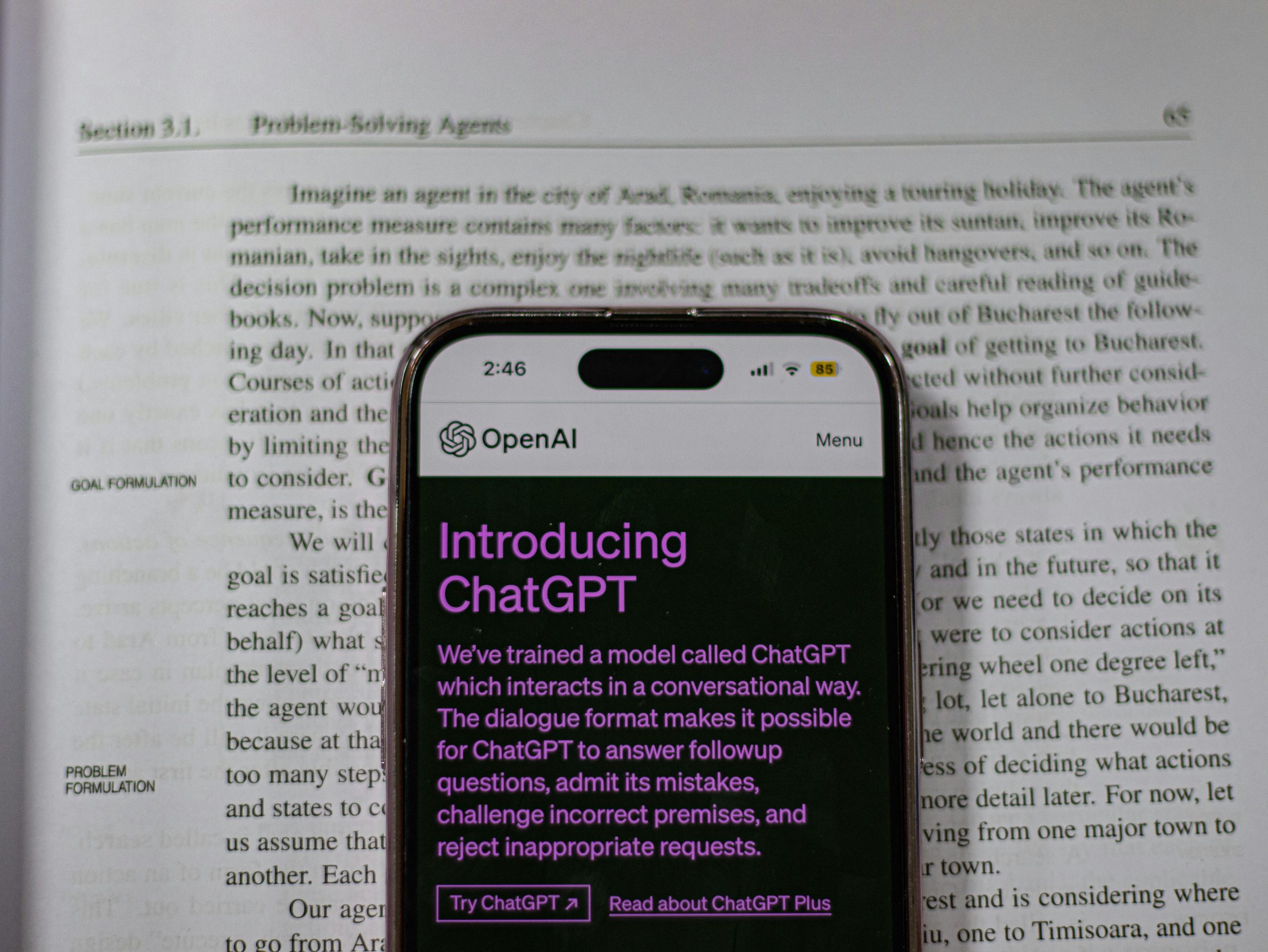Across the country, states have been busy drafting laws to keep artificial intelligence in check. Lawmakers race to protect privacy, jobs and public safety, hoping not to fall behind. Then, almost without warning, Congress adds a twist. A new budget reconciliation bill now sits on the table, one that presses pause on state-led AI efforts for the moment.
For tech builders, watchdogs and everyone in between, this move means a step back and a deep breath. What looked like a patchwork of state rules could freeze as federal leaders press for one path forward. In the weeks ahead, experts and local voices will be watching closely, weighing what this delay means for innovation, fairness and the future of smart technology in daily life.
What Is the House Budget Reconciliation Bill?

Photo by Kaboompics.com
The House Budget Reconciliation Bill is one of Congress’s most powerful tools. It influences how, when, and where money flows at the highest level. These bills move more than dollars—they can set the rules for entire industries, change the pace of new policies, and sometimes shift the path of government itself. In the debate over artificial intelligence, this type of bill now acts as both brake and steering wheel, holding up state action on AI while Washington aims to chart a single national route.
Purpose of the House Budget Reconciliation Bill
Congress turns to a budget reconciliation bill when it wants sweeping change. Unlike most bills, this one isn’t just about spending. It can touch taxes, health care, education, and even how specific new technologies are regulated.
You can think of reconciliation as the shortcut on a winding road. Normally, big policy changes could get stuck in debate or slowed by endless votes. But with a reconciliation bill, the rules are different:
- Fewer delays: The bill can pass the Senate with a simple majority, so it skips the 60-vote hurdle that blocks most big changes.
- Strict scope: Everything in the bill must be tied back to the federal budget—spending, revenue, or the nation’s debt.
- Big impact, fast: Congress uses reconciliation for ideas it cannot leave to chance, like national health care or major tax reform. Now, it’s being used to pause state AI plans.
Why Congress Uses It for Big Policy Changes
Reconciliation gives Congress a trusted, almost tactical advantage:
- Speed: Congress can move big ideas forward even when there’s no wide agreement.
- Control: Lawmakers can use this bill to keep states in line with national goals.
- Consistency: If every state marched to its own beat on AI, we’d see a wild quilt of laws and loopholes. Reconciliation puts up a stop sign and makes states wait for one set of federal rules.
Here, it’s not just about budgets or math. The trick is that the bill’s format gives Congress the power to set a single, stable policy that stands above fifty different state plans. The House Budget Reconciliation Bill, right now, acts like a stoplight for state lawmakers—everything pauses while Congress decides what’s next.
How the Bill Targets State-Level AI Laws

Photo by Sora Shimazaki
Right now, a new wave of AI laws is building in state capitals. States see the promise and the problems that AI brings to daily life, so they’re eager to step in. Then Congress hits the brakes. Deep inside the latest budget measure sits a clause: for a set stretch of time, states must hold back from making or enforcing their own AI rules. What happens next? A standoff between quick state action and a slow, nationwide approach.
States Driving Their Own AI Rules
States have gotten a running start on AI laws, acting before any big federal policy appeared. Think of California, where lawmakers pushed the “Automated Decision Systems Accountability Act” that would force companies to audit their AI for bias and risk. New York proposed measures demanding transparency in AI-driven hiring tools, and Illinois set guardrails for AI use in workplace surveillance.
A few vivid examples:
- California’s bold moves: The state often shapes tech policy for the rest of the country. Its proposed AI law asks companies to bake fairness and oversight into every algorithm.
- New York’s watchdog approach: Lawmakers want AI hiring tools to pass regular checks for discrimination, and warn job applicants about their use.
- Illinois and workplace AI: Under the state’s leadership, new laws would limit how AI tracks workers’ productivity and safety.
Each state builds its own system, leading to a patchwork of demands for AI companies to juggle. In the eyes of companies, this can feel like a maze with a new turn at every state border.
What the Delay Would Mean for State Innovation
A forced pause on state AI rules pulls the rug out from under local innovation. Many states see themselves as test kitchens for new ideas, where officials can spot harm and fix it faster than Congress ever could. A delay upends this rhythm.
What does this mean for day-to-day progress?
- Innovation slows: States known for trying bold ideas have to wait for Washington to decide what’s safe.
- Oversight freezes: New protections against bias, privacy breaches or unfair hiring practices can’t take effect until the federal government gives its okay.
- Business in limbo: Companies eyeing new AI products or compliance plans may push pause. No one wants to jump ahead without knowing what the final rules will be.
For local governments, this feels like staring at a red light with your foot hovering over the gas pedal. Plans, budgets, and fresh ideas might sit on the shelf while federal lawmakers argue over the details. States could lose their role as early warning systems for AI’s trickiest problems, trading flexibility and quick fixes for a wait at the starting gate.
The Arguments For and Against the Federal Delay
The debate over pausing state AI laws boils down to two visions for the future. On one side, supporters warn of chaos if every state writes its own script. On the other, opponents argue that a top-down delay could stifle new ideas and stall protection that people need right now. Let’s peel back both arguments to understand what’s really at stake.
Supporters: A Need for Consistency and Time

Photo by KATRIN BOLOVTSOVA
Supporters of the federal delay—tech companies, industry lobbyists, and some lawmakers—make their case clear. They worry a patchwork of rules from state to state could turn US AI regulation into a maze.
They argue:
- Clarity beats chaos: “Imagine navigating 50 different roadmaps at once,” says one industry group. Businesses could face lawsuits or fines in one state for actions that are legal just across the border.
- Time for the right rules: Supporters say rushing leads to mistakes. With AI moving so fast, a piecemeal approach could cause more harm than good. They argue that Congress needs breathing room to write fair, thoughtful guardrails.
- Global competitiveness: Many warn that splitting compliance costs and rules across states will put US companies at a disadvantage worldwide. “One country, one set of rules,” a business coalition says, “lets our innovators compete rather than untangle red tape.”
For them, a pause is like pressing save before editing a big file—keeping chaos at bay until the final, national version is ready. They see federal consistency as the backbone for safe, widespread AI use that benefits everyone, not just tech giants.
Opponents: Blocking Progress and Local Voices
Opponents of the delay—including consumer advocates, privacy activists, and many state leaders—see the move as a roadblock, not a lifeline.
Their main arguments center on risk and fairness:
- Stalling needed protections: “We can’t put safety on hold,” insists a privacy group leader. Bad actors don’t wait for Congress. States are often first to spot harm, from biased hiring AIs to invasive surveillance tools.
- Local answers for local needs: What fits California may not fit Iowa. States want the freedom to tailor protections for their people—whether that means stricter privacy or tougher AI audits.
- Silencing new solutions: Much of what works in tech policy starts as a state experiment. Pausing innovation at the state level may stop the next smart idea from even getting off the ground.
Opponents believe freezing state action leaves people exposed. To them, it’s like telling every city’s fire department to stand by during an active fire, just because Washington wants to design a national uniform. Local lawmakers warn that waiting on Congress risks leaving people unprotected from real harm today.
Both sides agree the stakes are high. The fight over this delay is more than a battle about rules—it’s a clash over how quickly, and by whose hands, Americans will be protected as AI weaves deeper into daily life.
What Comes Next if the Bill Passes
As soon as the president signs the House Budget Reconciliation Bill, the path for AI rules in America shifts overnight. Lawmakers, companies, and everyday people will see the rules of the game flip. Statehouses that led the charge must now wait. Big tech firms and startups face new choices about timing and risk. Federal agencies start drawing new lines for what’s allowed and what’s off limits. This pause is not quiet—it’s a deep breath before a new race begins.
Ripple Effects for Business and Tech

Photo by Shantanu Kumar
If the bill passes, companies working with AI face both relief and uncertainty. For now, the tangled mess of state-by-state rules is swept away, giving businesses a single pause. No need to race for overnight compliance with 50 different regulations. But this calm comes with new pressure.
Firms must quickly shift their focus:
- Product launch decisions: Should companies hold back on new AI tools and wait for federal guidelines? Some might shelve bold projects until the path is clear.
- Compliance planning: Legal teams who were tracking dozens of state bills hit pause. Now, they must game out what one sweeping federal rule might include and how to prepare.
- Investment choices: While big players may weather delays, smaller startups could struggle. Investors may freeze funds until the regulatory fog lifts.
- Buying time—but with strings attached: This pause could be a gift or a curse. For some businesses, it’s a timeout to catch up. For others, it delays much-needed rules that could help their products gain trust.
The pause will feel like a long yellow light before a green or red appears. Some will speed up, fearing what’s coming. Others will stand still, not willing to gamble on the unknown.
The Future of State and Federal Action on AI
As the delay ticks down, everyone will watch Washington. State lawmakers give up the driver’s seat, but not for long.
When the federal hold lifts, two things will likely happen fast:
- The federal government could move first, rolling out broad rules from agencies like the Federal Trade Commission or a new AI office. A national framework could set basic rules for safety, data use, and fairness.
- States could jump back in, ready with bills already drafted and lessons learned from the federal guidelines. Some places, like California or New York, might quickly pass new laws that go even further than Washington’s.
The drive for new rules will come from all corners:
- Consumer advocates will push for strict rules and fast action, worried about bias or privacy.
- Tech companies will press for clear, simple standards to avoid surprises.
- States will want flexibility to address unique needs, especially if the federal rules seem too loose.
Picture a wave swelling behind a dam—once the delay ends, pent-up plans and demands will rush forward. States with strong tech sectors or active local politics will act first, trying to shape what comes next in ways that match their own values and worries. Citizens may see meetings, hearings, and headlines about AI boom again.
As this chapter closes, the next one begins with new power struggles, old debates, and the clear sense that no one wants to be left behind.
Conclusion
Picture Congress in late-night sessions, stacks of drafts in every hand as the clock ticks on. State lawmakers hover nearby, poised to leap when the hold lifts. The air hums with ideas, doubts, and deadlines, all tangled up in the promise and the pressure of new AI rules.
The pause on state regulation is more than a legal twist—it is a turning point for how America sets the limits of machines that shape daily life. Every resident, worker, and business now stands at the edge of the unknown, waiting to see which voice carries: the steady drumbeat of national rules or the fierce drumroll of local experiments.
This story matters because it decides not just who writes the future of AI, but how safe, fair, and bold that future becomes. Thanks for reading—be ready for the next headlines as this story keeps moving, and share your thoughts below on where you hope lawmakers steer next.